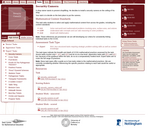
- Subject:
- Mathematics
- Material Type:
- Full Course
- Provider:
- Pearson
- Date Added:
- 11/02/2020


Ratios
Type of Unit: Concept
Prior Knowledge
Students should be able to:
Calculate with whole numbers up to 100 using all four operations.
Understand fraction notation and percents and translate among fractions, decimal numbers, and percents.
Interpret and use a number line.
Use tables to solve problems.
Use tape diagrams to solve problems.
Sketch and interpret graphs.
Write and interpret equations.
Lesson Flow
The first part of the unit begins with an exploration activity that focuses on a ratio as a way to compare the amount of egg and the amount of flour in a mixture. The context motivates a specific understanding of the use of, and need for, ratios as a way of making comparisons between quantities. Following this lesson, the usefulness of ratios in comparing quantities is developed in more detail, including a contrast to using subtraction to find differences. Students learn to interpret and express ratios as fractions, as decimal numbers, in a:b form, in words, and as data; they also learn to identify equivalent ratios.
The focus of the middle part of the unit is on the tools used to represent ratio relationships and on simplifying and comparing ratios. Students learn to use tape diagrams first, then double number lines, and finally ratio tables and graphs. As these tools are introduced, students use them in problem-solving contexts to solve ratio problems, including an investigation of glide ratios. Students are asked to make connections and distinctions among these forms of representation throughout these lessons. Students also choose a ratio project in this part of the unit (Lesson 8).
The third and last part of the unit covers understanding percents, including those greater than 100%.
Students have ample opportunities to check, deepen, and apply their understanding of ratios, including percents, with the selection of problems in the Gallery.

Gallery OverviewAllow students who have a clear understanding of the content thus far in the unit to work on Gallery problems of their choosing. You can then use this time to provide additional help to students who need review of the unit's concepts or to assist students who may have fallen behind on work.Gallery DescriptionsWork on Your ProjectStudents will work on their project with their group and evaluate their progress using the rubric.Equivalent RatiosSometimes ratios that are equivalent don’t look equivalent at first. Students will use their ratio detective skills to identify equivalent ratios, and then they will choose a model to represent a set of equivalent ratios.Three FarmersTough times on the farm mean three farmers are sharing a seed purchase. Students will make sure each farmer gets the right amount of seed.The DanceEveryone is excited about the upcoming school dance, and two students discuss the ratio of boys to girls. Students will evaluate their statements and decide if their statements are true.The Adults at SchoolWho are the adults who work at school? Students will represent and investigate ratios of teachers to non-teaching staff, including adults at their own school.Sports ReportersReporters are sometimes wrong. Students will check the math in two reports about soccer matches at Estadio Azteca in Mexico City.Screen ChallengeThe aspect ratio of movie screens and TV screens has a direct impact on viewers’ experience. Students will explore aspect ratios in this activity.Election ResultsOops! A newspaper made an error in a report about the local election results. Students will find and fix the error.Birthday at the MoviesMia’s family is treating her whole class to a movie for her birthday! Students will calculate how much the tickets will cost.Dinner ReservationsIt’s graduation night! Students will calculate how many tables a restaurant needs for a party of 26 people.Birth MonthsStudents will investigate the percent of students in a class who have birthdays in each month.

Students will decide on the best place to put the camera. A shop owner wants to prevent shoplifting. He decides to install a security camera on the ceiling of his shop.